Caring for hippeastrum after flowering at home
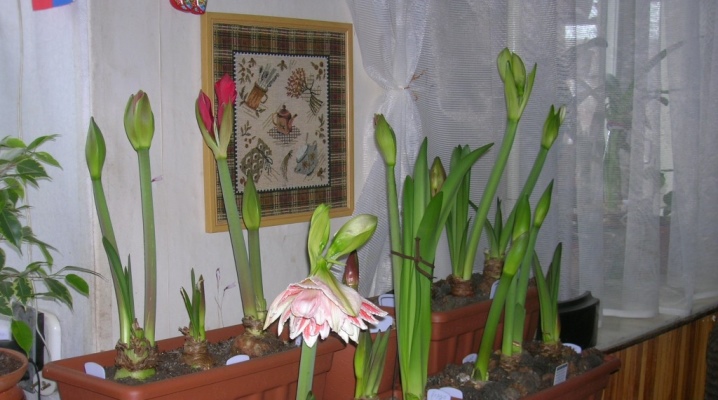
Indoor plants not only decorate the room, but also heal the air in it, taking carbon dioxide from it and converting it into oxygen. But each representative of the flora should have its own approach - some require a lot of sun, someone prefers a damp twilight, etc. This article will focus on the hippeastrum, one of the most beautiful representatives of the flower world.
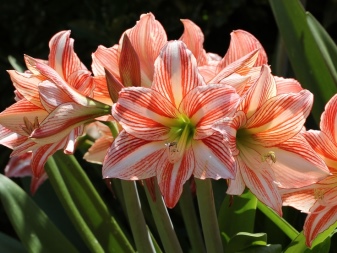
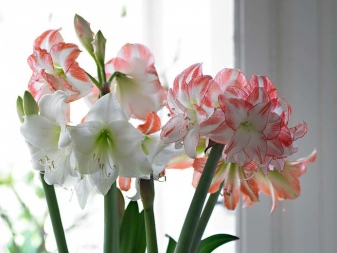
Peculiarities
Hippeastrum is a perennial bulbous plant of the amaryllis family. To date, almost 100 species of this flower are known. Its appearance before flowering does not differ in particular beauty - from a bulb hidden under the ground, 2 rows grow opposite each other, rather wide, about 4-5 cm, and long (50-75 cm) green leaves. During flowering, the plant transforms. The flowering process itself begins with the fact that the plant shoots up a hollow arrow, at the very top of which an inflorescence is formed, consisting of 2-6 beautiful flowers. Their colors are very different - depending on the variety.

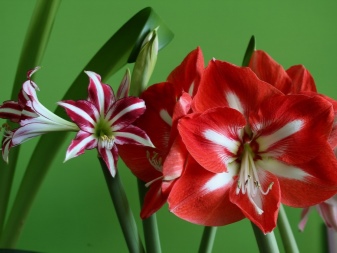
Caring for hippeastrum at home, although not particularly difficult, has its own characteristics. When the plant begins to actively grow - to release new leaves after hibernation, it is very important to provide it with a comfortable temperature - in the range from 17 to 25 degrees Celsius. For distillation, choose larger onions. - they have more supply of useful nutrients, which means that the plant itself has more chances to grow strong and healthy.
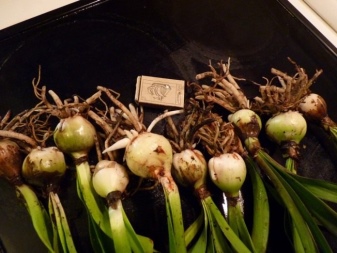
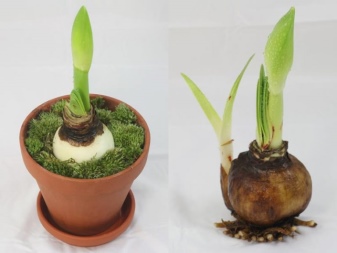
Hippeastrum is a great lover of light, therefore, he needs to find a place well lit, but without direct sunlight - they can adversely affect his appearance. Rotate the flower pot from time to time - so its development will be harmonious and symmetrical.
If you have at least a small vegetable garden or garden, transplant a flower there for the summer - believe me, it will benefit him.
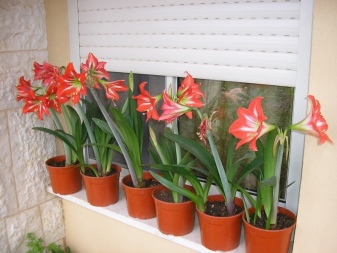

What to do if the hippeastrum has faded?
After flowering, any plant needs special care, because the flowering plant itself throws all its strength on the ovary of flower buds, hippeastrum is no exception. After the flowers wither, the bulb begins to intensively restore the expended forces, it needs your support - the correct regime of replenishment and watering of the earth. And yet - you do not need to immediately cut the flower arrow at the base - this can start the process of its rotting, which will spread to the bulb. It is best to cut it off gradually:
- first of all remove the wilting inflorescence, because it continues to suck the juices from the bulb;
- further measure about a decimeter and a half above the ground and cut the peduncle at this height;
- after the stump left over from the previous circumcision is completely dry, it removed by simple twisting.


The formation of new young leaves after the removal of the arrow will resume, but the process will slow down greatly - do not wait more than 1 new leaf per month. After you have tidied up the appearance of the flower, it's time to take care of it - to strengthen its nutrition. To do this, you will have to partially replace the soil - after all, the bulb has managed to absorb most of the substances it needs from the old soil. Remove about 3-4 cm of soil from above, replace it with a new substrate of identical composition (mix turf, leafy soil with humus, sand and peat in a ratio of 2: 1: 1: 0.5: 0.5). After this procedure, you just have to properly water the plant.
To do this, remember a few tips from experienced florists:
- make sure that liquid did not get on young leaves or onion;
- do not use tap water for irrigation - fill it in plastic bottles, let it stand for about a day or two at room temperature, only then water;
- too much watering can lead to the fact that the roots and bulb begin to rot, so observe the measure;
- if you are afraid to overdo it with water, use bottom watering - pour water into the pan of the pot. Believe me, the plant will be able to draw water from the lower soil layer.
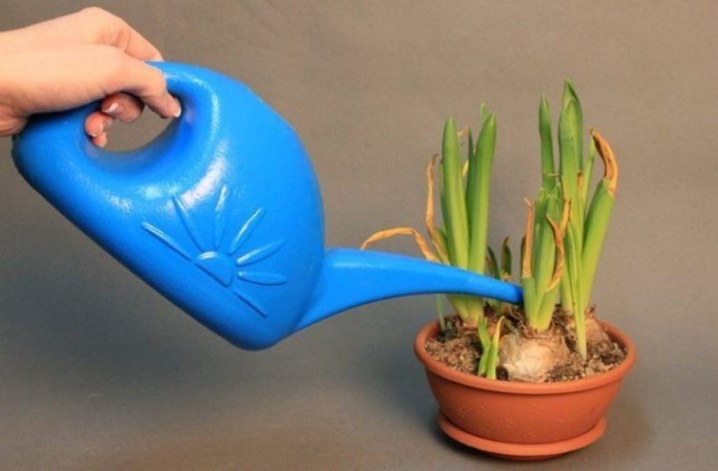
Don't forget about fertilizers. Choose the feeding mode, focusing on the appearance of the plant - if it seems to you haggard, very tired, feed it once every 7 days. If the condition of the plant has hardly changed after flowering, then two additional dressings per month are enough.
It is most convenient to combine feeding and watering a flower, dissolving complex fertilizers in water. When choosing a top dressing for your plant, focus on the content of phosphorus and potassium compounds - it should be increased, it is these microelements that help plants recover.
Remember sunshine too - Place the pot of hippeastrum on a windowsill that is well lit during the day.
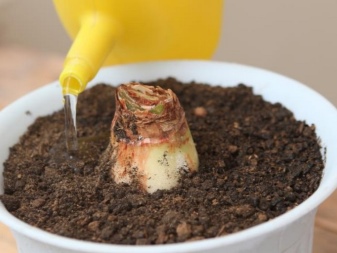


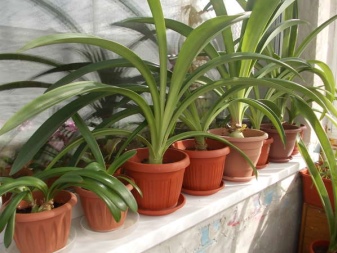
Possible problems
The main problem is the lack of flowering, it can be caused by several reasons.
- Too young plant... Remember that hippeastrum begins to bloom only in the third year of life, do not expect beautiful flowers from a young, only this year, planted onion.
- Nutrient-poor soil... This situation is caused by the lack of plant transplantation, because the roots of the hippeastrum in a couple of years manage to suck out all the substances useful to them from the soil. Experienced flower growers advise replanting hippeastrum at least once every 2 years.
- Improper feeding or lack of it. The plant needs to be fed regularly, especially after it has bloomed.
- Insufficient illumination of the plant location. Choose a south side for your pet, with a small number of sunny days, compensate for the lack of natural light with artificial light.
- Failure to comply with the rest-wakefulness regimen. It is very important to properly prepare the bedtime of an exotic plant, as well as observe some conditions during hippeastrum hibernation.
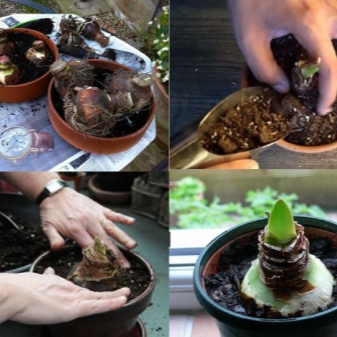
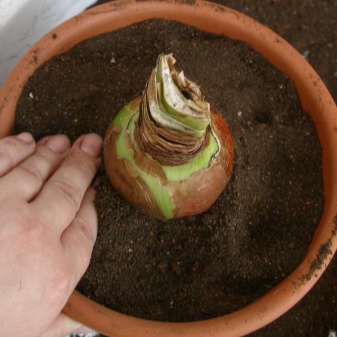
Useful Tips
Listen to a few helpful tips from well-known florists.
- Monitor the condition of the soil in the pot - the soil should not dry out. The best option is slightly damp ground. The lack of water immediately affects the appearance of the plant - the leaves fade and lose their elasticity, and the proudly looking flowers begin to bow their beautiful heads.
- Severe darkening of the leaves may be due to the fact that the plant is cold. Check the room temperature, and best of all, move the pot of hippeastrum to a warmer place.
- Withering of hippeastrum leaves may be a sign that the plant is preparing to hibernate.... Let the soil dry and reduce watering to the minimum value.
- If the color of the flowers of the plant is too faded, try rearranging it to a slightly shaded corner. - it is quite possible that the reason lies in an overabundance of lighting.
Summing up, we can say one thing: if you properly care for this wonderful exotic plant, then it will delight you with its beautiful flowers more than once a year!
For the care of hippeastrum after flowering, see below.




























The comment was sent successfully.